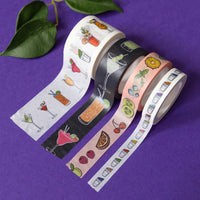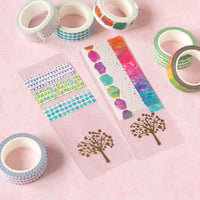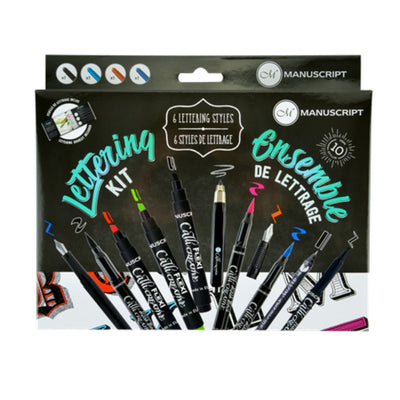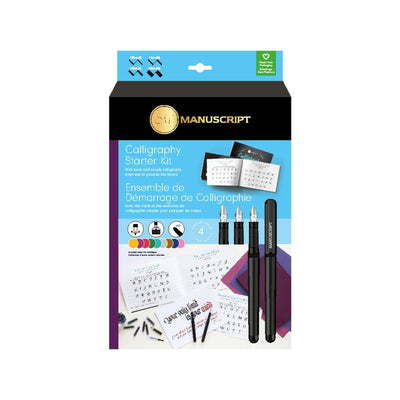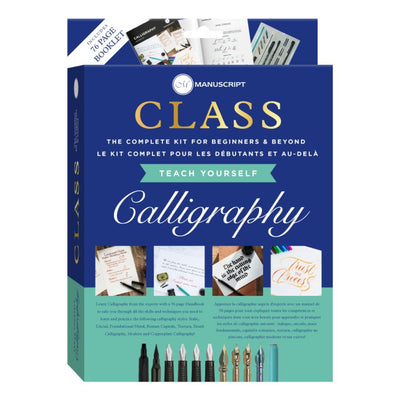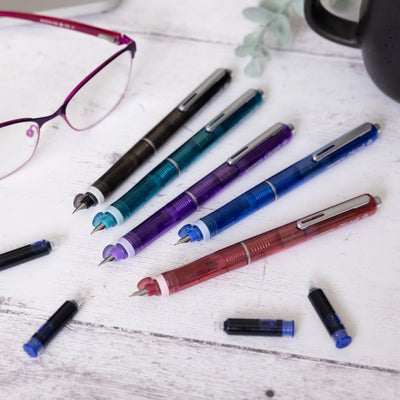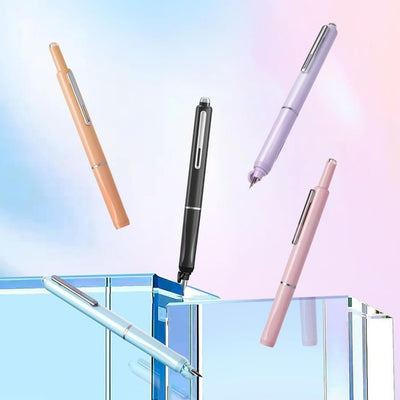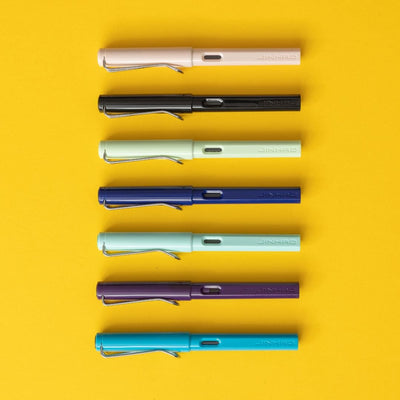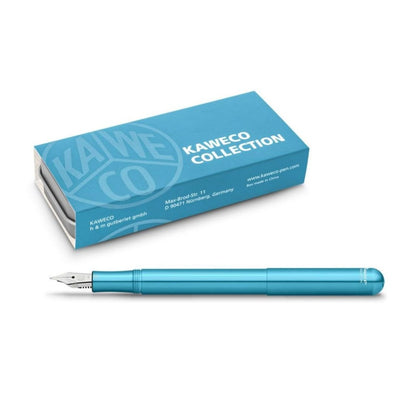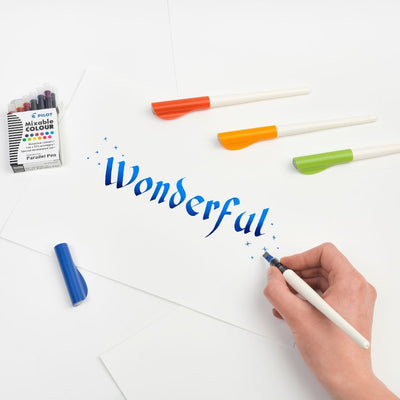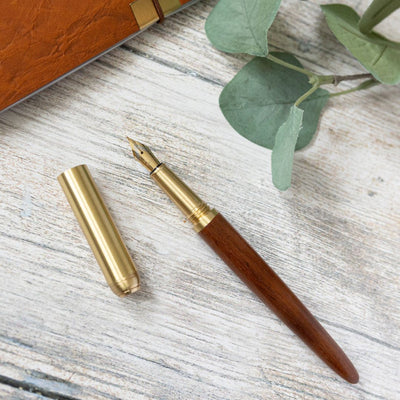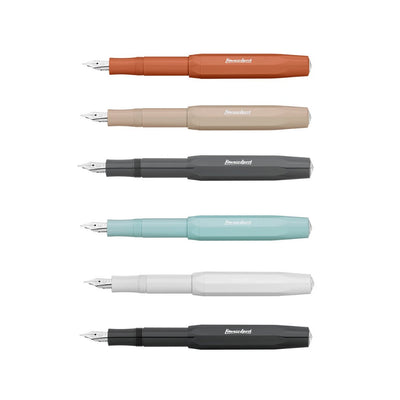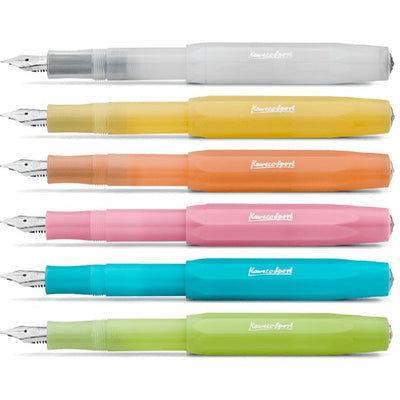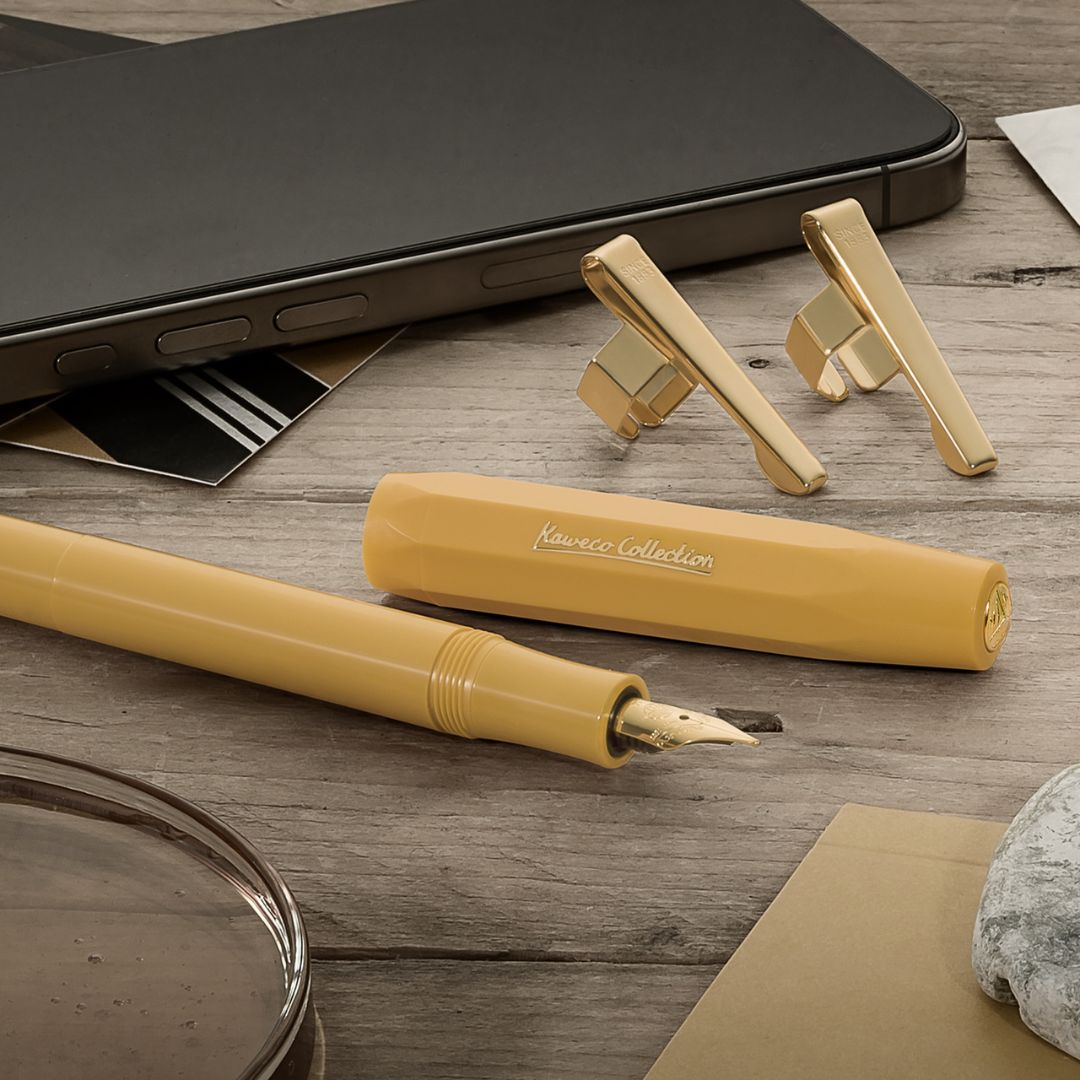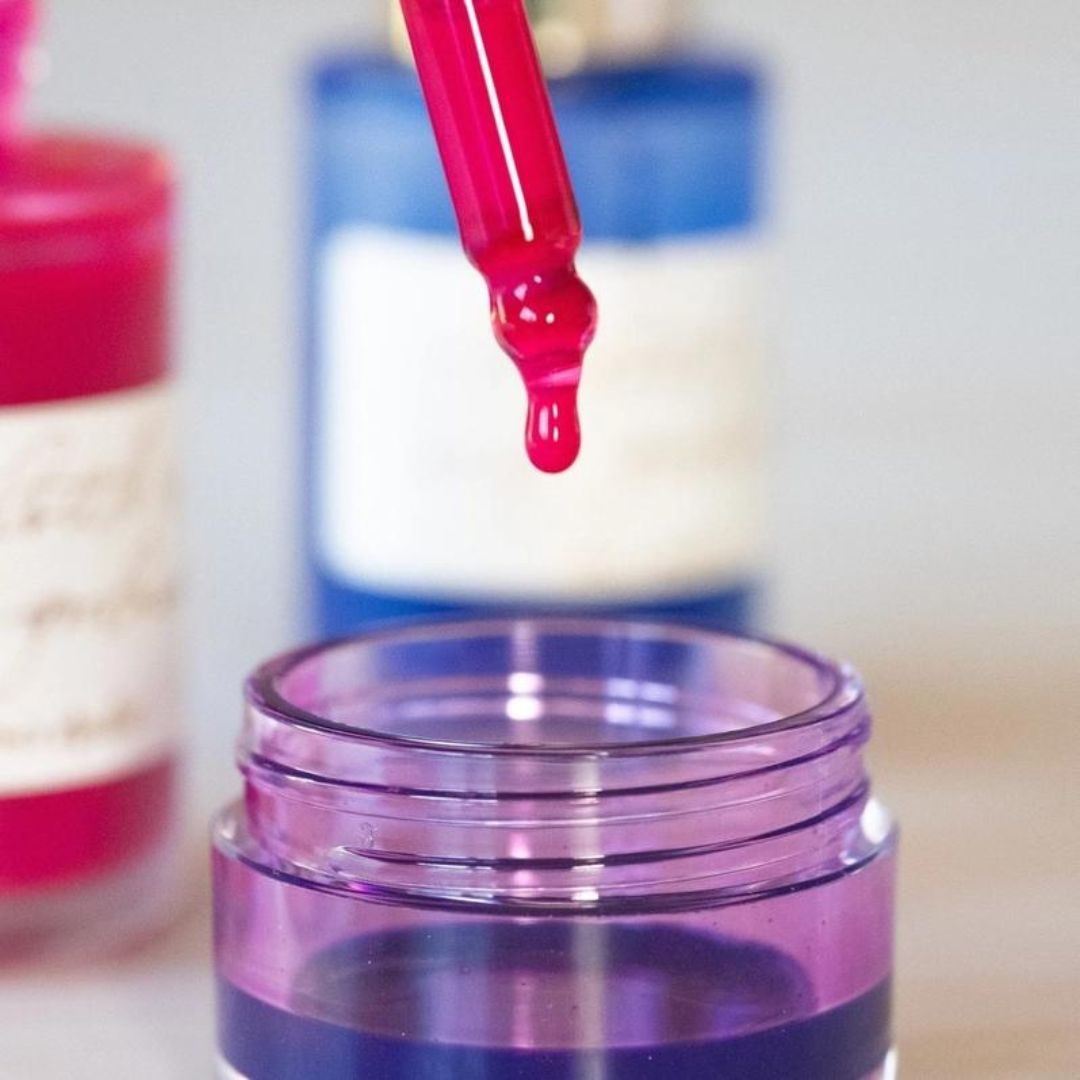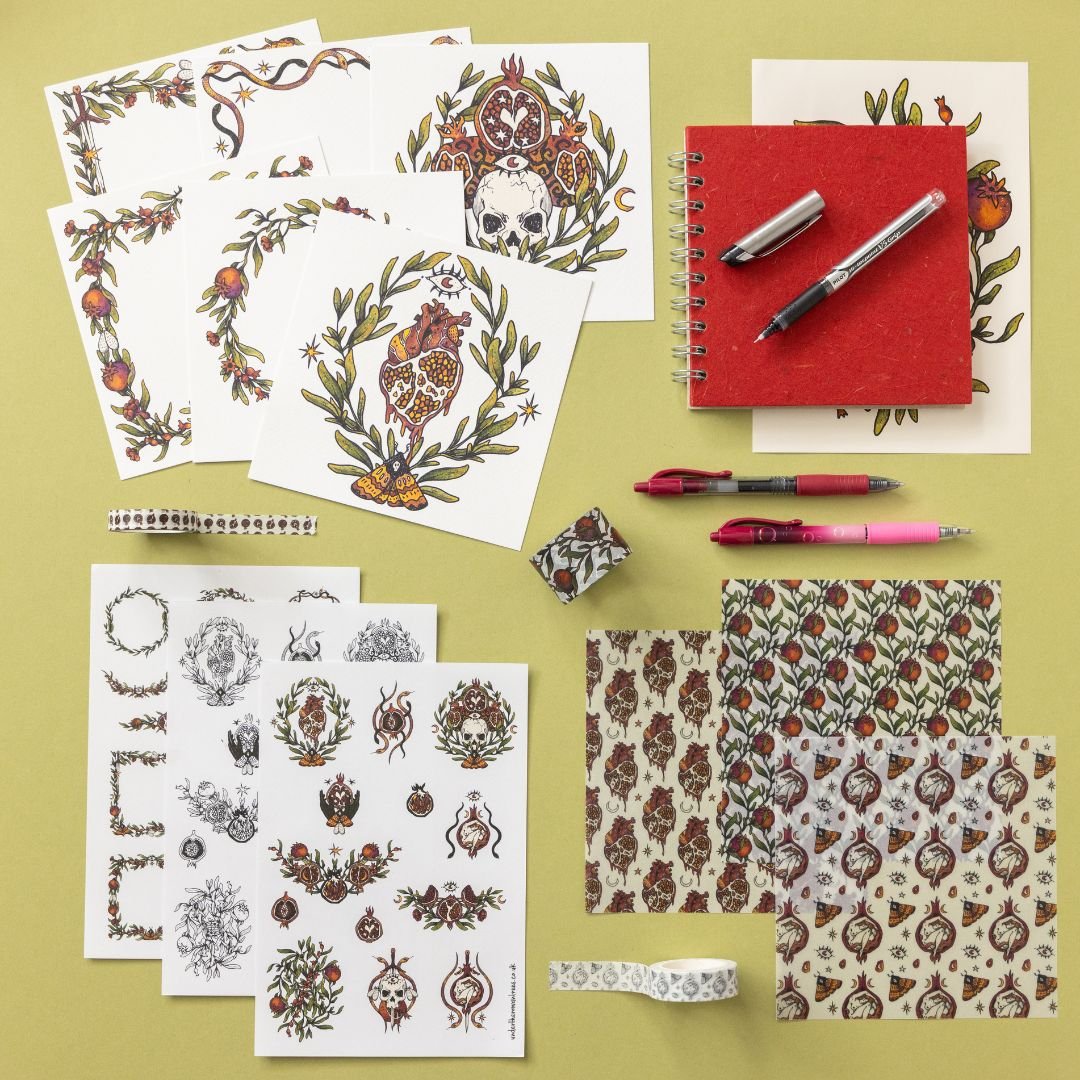There's something truly magical about writing with a fountain pen. The smooth flow of ink, the satisfying scratch of the nib against paper, and the elegance of its design all combine to create a truly unique writing experience.
However, fountain pens require proper care in order to keep them in tip-top shape. So, we're going to chat about the art of looking after your fountain pen, including using a fountain pen converter, filling it with ink, cleaning your pen and a beginner's guide to writing with a fountain pen to finish off.
Converters vs. Cartridges
Before diving into the specifics of fountain pen maintenance, it's important to understand the difference between converters and cartridges. Cartridges are pre-filled ink containers that can be easily replaced when empty. On the other hand, converters are reusable devices that allow you to draw ink from a bottle and fill your fountain pen. While cartridges offer convenience, converters provide the freedom to explore a wider range of ink colours and types. Plus, they are eco-friendly since you can refill them instead of disposing of cartridges.
There are a few different types of fountain pen converters, such as piston, squeeze, plunger and button converters. We’ll mostly be discussing piston converters in this blog post.
[collection=fountain-pen-converters]
How to use a Piston Fountain Pen Converter
If you have a fountain pen that is compatible with a converter, using it to fill your pen with ink is pretty simple! Here's a step-by-step guide to get you started:
- Check that the converter you are using is compatible with your fountain pen.
- Make sure your pen is clean by rinsing it with water and gently drying it with a lint-free cloth.
- Insert the converter into your pens grip sections.
- Submerge the nib of your fountain pen into the ink bottle at a slight angle to avoid excess ink flow. Make sure the whole nib is submerged into the ink so that the edge of the grip section is also touching the ink.
- Slowly twist the end of the converter counterclockwise to extend the piston and push the air out of the converter. You should notice air bubbles come up through the ink when you do this.
- Then slowly twist the end of the converter in the opposite direction, clockwise, to raise the piston and draw ink into the pen.
- Use a cloth to remove any excess ink either on the converter or the pen. It’s a good idea to touch the nib to a paper towel for a few seconds just in case there is any excess ink saturating the pen.
- Reassemble the pen and you are ready to go!
How to clean your fountain pen
Fountain pens should be cleaned every four to eight weeks to keep them working properly. This is because a fountain pen works through capillary action. Ink flows down the feet and nib slit to the writing surface. Dust, paper fibres and dried ink can build up in the nib and feed, interrupting the pen's normal flow and causing poor writing.
If your pen suddenly experiences inconsistent flow or scratchiness, it's time to clean the pen. If your pen is writing well, and you will be changing inks a basic cleaning is enough.
Here's how to do it.
- Uncap the pen and remove the nib section from the barrel. If your fountain pen uses a cartridge or converter, remove it from the section. Hold the nib section under cool running water for a few seconds.
- Then, soak the nib section in a cup of clean water. Replace the water when it becomes saturated with ink. Repeat this process until the water remains clear for at least an hour.
- Place the open end of the converter in a cup of water. Fill and empty the ink chamber until it is clean.
- Use the converter to cycle water in and out of the pen. Repeat until no more ink is visible.
- Remove the nib section from the water and let it dry. You can wrap the nib in a soft, dry cloth or paper towel and leave it pointing downward in a small cup.
- Once the nib section is dry, install the converter and screw the nib section back into the barrel.
- If your pen is writing poorly or you're ready to change inks, we recommend flushing the pen by forcing water through the nib section. This ensures that the feed is completely clean.
- HANDY TIP: Try out this fountain pen hack… Cut off the end of an empty ink cartridge and fit it into a syringe. Make sure the connection is airtight to prevent leakage. Then use the tool to flush the pen as normal.
A Beginner's Guide to Writing With a Fountain Pen
Now that you have your fountain pen ready, it's time to start writing. Here are a few tips to help you make the most of your fountain pen experience:
- Hold the pen in a way that feels comfortable for you. Experiment with different grips to find what works best, but remember not to apply too much pressure.
- Let the pen do the work. Unlike ballpoint or gel pens, fountain pens require little pressure to write. Allow the pen's weight and the ink's flow to guide your hand for a smooth writing experience.
- Fountain pens work best when held at a slight angle, usually around 45 degrees. This angle allows the nib to glide smoothly across the paper, producing consistent ink flow.
- Take it slow and avoid fast, rapid strokes that may disrupt the ink flow or cause the ink to splatter.
- Experiment with different papers and inks. Fountain pens can offer a unique writing experience on various paper types. Try different notebooks or journals and explore the wide choice of ink colours and properties available.
To find tips on calligraphy for beginners then head over to this article by Mont Marte.
Our 'Everything Fairy' Samantha is also a BIG lover of fountain pens and has previously written a blog post on her favourite entry level pens.
Caring for a fountain pen is more than just maintenance—it's an investment in the joy of writing. By using a converter, you unlock a world of colour and personalisation. With a little practice, you'll soon find yourself immersed in a delightful writing experience that brings a touch of elegance to your everyday life.
So, grab your fountain pen, fill it with your favourite ink, and let your words flow with grace and style. Happy writing!
[collection=fountain-pens]
[collection=fountain-pen-inks]
